| Area | S.F. Trinity |
| Topic | Tour: Proposed Chinquapin Salmon Restoration Area |
The Chinquapin Salmon Restoration Area is approximately 21,000 acres and covers 26.3 miles of potential Wild and Scenic River. This area extends from near the town of Forest Glen south of Highway 36 to the East Fork South Fork Trinity River. This area contains the second largest unprotected ancient forest in northern California and has spotted owls, bald and golden eagles and Pacific fishers. Photo provided by David Rose of the South Fork Trinity River Land Conservancy.
The Chinquapin Salmon Restoration area is bisected by the South Fork Trinity River, one of the six large, undammed rivers in California. Outstanding recreational opportunities are provided by this 22-mile stretch of river, including white-water rafting in the spring. The U.S. Forest Service has recommended adding this segment of the upper South Fork Trinity to the National Wild and Scenic Rivers System to protect its fishery and exceptional scenery. Photo by Jim Rose and provided by David Rose of the South Fork Trinity River Land Conservancy.
The old-growth forests within the Chinquapin Salmon Restoration Area comprise12,991 acres of late serial forest or 50% of the total area. This area provides critical habitat to spotted owls, as well as both bald and golden eagles. Sensitive salamanders and frogs also find refuge here. The abundance of black tail deer makes the area popular with hunters. The South Fork Trinity National Recreation Trail also passes through the area giving hunters, hikers and equestrians access to the area. Photo provided by David Rose of the South Fork Trinity River Land Conservancy.
The Chinquapin Salmon Restoration area presents some of the largest chinquapin, fir and pine to be found anywhere within the South Fork Trinity River watershed. With its sparse undergrowth and thick-barked trees, the forest is naturally protected from the detrimental effects of fire. This area provides great recreational trails. Photo provided by David Rose of the South Fork Trinity River Land Conservancy.
Clear cuts on the edge of the Chinquapin SRA, in the foreground have broken up the wildlife habitat and migration corridors so important to the protection of the many endangered and sensitive animals that live here. Photo by Sam Camp provided by David Rose of the South Fork Trinity River Land Conservancy.
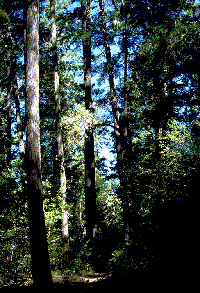 Click on image to enlarge (188K).
Click on image to enlarge (188K).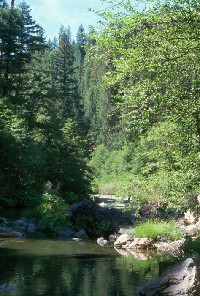 Click on image to enlarge (134K).
Click on image to enlarge (134K).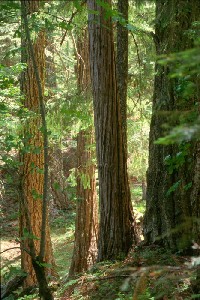 Click on image to enlarge (125K).
Click on image to enlarge (125K).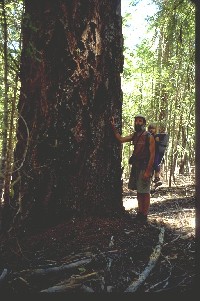 Click on image to enlarge (133K).
Click on image to enlarge (133K).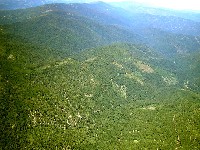 Click on image to enlarge (183K).
Click on image to enlarge (183K).
To learn more about this topic click Info Links
To view additional information (data source, aquisition date etc.) about this page, click Metadata
| www.krisweb.com |
